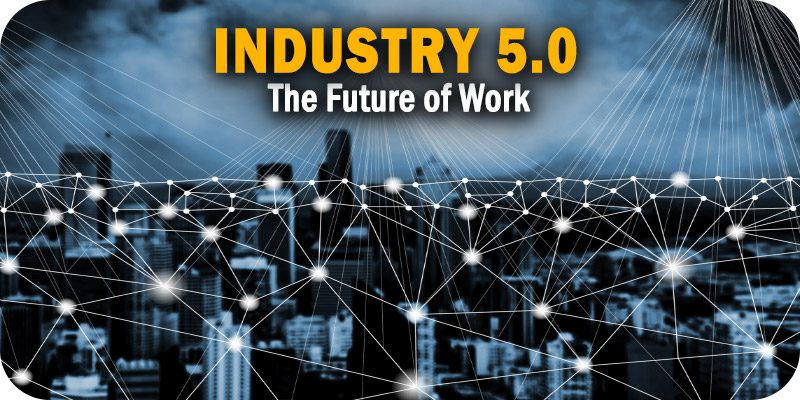Industry 5.0 is the Future of Work. To Get There We Need Intelligent Automation.


As part of Solutions Review’s Premium Content Series—a collection of contributed columns written by industry experts in maturing software categories—Tommi Holmgren, the Vice President of Solutions at Robocorp, explains why intelligent automation is critical in unlocking the potential of Industry 5.0.
 Over the past few years, the workforce has experienced some drastic shifts. In particular, the rise of remote and hybrid work has spurred countless changes, including business leaders beginning to focus on Industry 4.0. This fourth industrial revolution includes advancements like automation, AI, ML, and IoT. While Industry 4.0 has brought us significant innovations, the next wave of the industrial revolution is already taking place: Industry 5.0.
Over the past few years, the workforce has experienced some drastic shifts. In particular, the rise of remote and hybrid work has spurred countless changes, including business leaders beginning to focus on Industry 4.0. This fourth industrial revolution includes advancements like automation, AI, ML, and IoT. While Industry 4.0 has brought us significant innovations, the next wave of the industrial revolution is already taking place: Industry 5.0.
A place where humans and machines work intelligently together to accomplish more in a single day, week, month, or year, is the future of work. Especially as our workforce is constantly evolving, it would be wise for business leaders to shift focus and join the movement. The best way to begin implementing an Industry 5.0 mindset? Intelligent automation.
Industry 5.0 and the Future of Work
New on the scene, Industry 5.0 pivots from economic value to societal value and from profit to well-being. Building off of Industry 4.0, this new wave of work utilizes innovation to center workers, uplift work-life balance, and drive success not only for businesses but employees as well.
This shift to a more well-being-focused work environment is not a new trend. Particularly since the onset of the pandemic, employees have been pushing their employers to encourage work-life balance. If they don’t see results, many employees take charge of their own experience. Take the trend of quiet quitting, for example. Employees are intentionally disengaging from work when they’re not provided with the resources or time to maintain a positive work-life balance.
Clearly, this prioritization of employee well-being is only growing more and more important, and it’s not going away any time soon. Some of the most outspoken proponents of employee well-being are Millennials and Zoomers, who are relatively early in their careers. Combine this generational activism with the proliferation of social media and information sharing, and it’s easy to see why business leaders would be wise to pay close attention to the trend. Industry 5.0 is becoming the future of work and a key focus for business leaders.
The Power of Intelligent Automation
Another rapidly growing trend across industries is intelligent automation. Combining automation technology with AI and analytics, intelligent automation creates business processes that think, learn, and adapt on their own.
Fusing various Industry 4.0 technologies together, like robotic process automation (RPA) and AI, intelligent automation achieves a more holistic digital workflow that goes beyond the individual capabilities of these advancements. Utilizing mountains of data and inputs, intelligent automation applications can make straightforward decisions at scale, create a smarter workflow where patterns are identified, and lessons are drawn and extrapolated to improve processes with as little human input as possible.
Ultimately, intelligent automation strives to tackle more than just the mundane tasks used for classic automation. It also allows robots to make decisions—sometimes as well, or even better than a human could—and gives human employees the freedom to focus on more creative and rewarding work.
Creating Industry 5.0 with Intelligent Automation
At its core, Industry 5.0 focuses on the employee and works to ensure productivity and satisfaction. Similarly, at its core, intelligent automation allows humans to spend more time on strategic tasks that advance innovation and boost engagement. Together, it’s a perfect match.
When intelligent automation takes on tedious tasks, it not only produces more accurate and efficient work, but it gives employees the bandwidth to pivot and focuses on work that is more interesting and, in some cases, critical to the big-picture. Further, since intelligent automation can take on more work than RPA or AI alone, employees can spend more time unwinding and recharging, helping to boost the work-life balance that Industry 5.0 is so deeply focused on.
Ultimately, as intelligent automation supercharges human and machine collaboration, more can be accomplished, and the work-life balance becomes more sustainable. Workers no longer have to spend hours squinting at their laptop screens late into the evening; they can go out and live their lives—a concept at the heart of Industry 5.0.
A New Workforce
We’re seeing Industry 4.0 technology, like RPA and AI, driving incredible success—for businesses and employees alike—but with constant evolution and developments in a myriad of industries, it’s clear that there is so much more we can and should achieve. Industry 5.0 visualizes that future, and intelligent automation helps realize it.
Even more exciting, with intelligent automation becoming more commonplace, it’s likely that we’ll see a transition to Industry 5.0 more quickly than anticipated. However, organizations don’t need to be ready for Industry 5.0 today, tomorrow, or next week. But if they’re serious about employee retention and experience, now is the time to start asking vendors about intelligent automation and making a move toward the future of work.




















